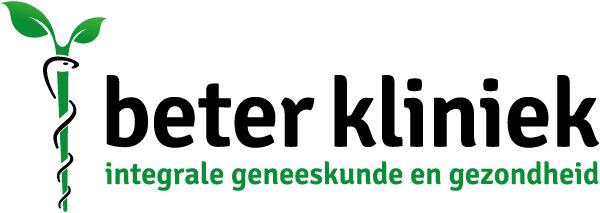WAT IS PEMF EN WAT DOET HET?
PEMF staat voor Pulsed Electromagnetic Field. Het is een uniek type medische behandeling die gebruik maakt van zeer geconcentreerde en nauwkeurige elektromagnetische therapie, zich richtend op de weefsels van het lichaam. Deze vorm van therapie brengt talloze gezondheidsvoordelen voor het lichaam. Als gevolg hiervan heeft het een breed scala aan toepassingen, van oog- en zichtproblemen tot bloedstroom/-circulatie tot zelfs aandoeningen aan de schildklier.
Door rechtstreeks naar de bron van bijna elke ziekte of aandoening (het bloed) te gaan en te werken aan het corrigeren van eventuele problemen die het heeft met het repareren en regenereren van bestaande cellen, is de enige limiet voor de potentiële medische toepassingen, de tijd en moeite die het kost om eerst het juiste onderzoek en tests uit te voeren. Met een groeiende interesse en vraag naar PEMF-therapie over het hele medische spectrum, kan het niet lang duren voordat dit type behandeling standaard is.
WAT IS SCHILDKLIERZIEKTE?
Schildklierziekte is een aandoening waarbij de schildklier, om de een of andere reden, niet goed functioneert. Het kan extreem moeilijk zijn om de juiste balans te behouden als dit eenmaal plaats heeft gevonden. Het resultaat is, dat de schildklier niet langer de juiste hoeveelheid hormonen en chemicaliën produceert die nodig zijn om de systemen van je lichaam correct te laten werken.
De schildklier scheidt een chemische stof af die bekend staat als thyroxine. Wanneer deze chemische stof door de lever en de nieren gaat, wordt het omgezet in een actief hormoon.
Het enige doel is om de stofwisseling te stimuleren en te verhogen, wat overigens het zuurstofverbruik verhoogt. Wanneer weefsels en bloedcellen niet het juiste zuurstofgehalte hebben, kan dit leiden tot ernstige gezondheidsproblemen en ziekten. In het geval van schildklieraandoeningen in het bijzonder, zijn er twee hoofdtypen, elk variërend van mild tot ernstig:
HYPOTHYREOÏDIE
Bij deze aandoening produceert de schildklier te weinig schildklierhormoon. Een paar van de meest voorkomende symptomen en bijwerkingen zijn:
Whole Body Symptomen – traagheid, gebrek aan energie, vermoeidheid en / of koud gevoel
Ontwikkelingssymptomen – vertraagde groei en zelfs vertraagde puberteit
Haar symptomen – droog haar en / of verlies
Andere veel voorkomende symptomen – constipatie, droge huid, broze nagels, hoog cholesterol, vergrote schildklier, prikkelbaarheid, seksuele disfunctie, gewichtstoename, langzame hartslag, of onregelmatige menstruatie.
HYPERTHYREOÏDIE
Deze schildklieraandoening produceert het tegenovergestelde effect als hypothyreoïdie. Bij deze aandoening produceert de klier te veel van de noodzakelijke hormonen die nodig zijn voor de werking van de diverse systemen van het lichaam. Het doel van een behandeling hier is om deze productie te verminderen of de reacties van de lichaamsorganen op het overtollige hormoon te verminderen.
Enkele symptomen geassocieerd met deze vorm van schildklierprobleem zijn:
Whole Body Symptoms – overmatig zweten, overmatige honger, warmte-intolerantie en / of vermoeidheid.
Gedragssymptomen – prikkelbaarheid, hyperactiviteit en / of rusteloosheid.
Hartsymptomen – snelle hartslag, abnormaal hartritme en / of hartkloppingen.
Stemmingssymptomen – stemmingswisselingen, nervositeit, angst en / of paniekaanval .
Oogsymptomen – abnormaal uitsteeksel of wallen van de ogen.
Menstruatie symptomen – korte en lichte menstruatie cycli of onregelmatige menstruatie.
Slaap symptomen – slapeloosheid, Slaapangst (psychofysiologische insomnie) of anderszins moeite met het in slaap vallen en / of in slaap blijven.
Andere veel voorkomende symptomen – diarree, gewichtsverlies, spierzwakte, haaruitval, tremoren (onwillekeurige, ritmische, trillende bewegingen),
of warme huid Een of meer van deze kunnen wijzen op het feit dat uw schildklier uit balans is en zo snel mogelijk moet worden aangepakt. Hier zijn een paar interessante statistieken met betrekking tot de schildklierfunctie:
JODIUMTEKORT WORDT GEVONDEN IN BIJNA 80% VAN DE BEVOLKING.
Dat is een ongelooflijk groot getal en een dat het vermelden waard is. De belangrijkste reden hiervoor is te wijten aan het gebrek aan voeding in ons voedsel. Onze natuurlijke vitamine- en mineralenkwaliteit is zo laag dat we niet uit de grond kunnen halen wat we nodig hebben. Het aanvullen van het dieet met een bescheiden hoeveelheid gejodeerd zout is de veiligste manier om jodium in onze voeding te verhogen. Veel mensen vermijden zout om gezondheidsredenen, maar deze populaire tactiek resulteert in te weinig zout in de voeding van veel mensen. Dus, het toevoegen van een bescheiden hoeveelheid gejodeerd zout in het dieet is een gemakkelijke manier om met jodiumtekort in de voeding om te gaan.
SCHILDKLIER STATISTIEKEN
Spontane hypothyreoïdie ligt tussen 1 en 2%, en het komt vaker voor bij oudere vrouwen en tien keer vaker bij vrouwen dan bij mannen.
Hyperthyreoïdie bij vrouwen ligt tussen de 0,5 en 2% en komt tien keer vaker voor bij vrouwen dan bij mannen. ER ZIJN VEEL AANWIJZINGEN DAT MENSEN MET EEN SCHILDKLIERAANDOENING REAGEREN OP PEMF
Een heldere statistiek die de aandacht verdient, is het feit dat veel mensen die lijden aan schildklieraandoeningen een effectieve en gunstige vorm van behandeling hebben gevonden in PEMF-therapie. Dit geldt voor beide soorten aandoeningen – hypo en hyper. Deze cellen en weefsels hebben, net als alle andere, de neiging om zeer goed te reageren op elektromagnetische stimulatie. Deze behandeling kan ook effectief zijn in het verminderen van de ernst van de symptomen van schildklieraandoeningen. In het bijzonder omvatten deze het vertragen van haaruitval, verhoogde energieniveaus en het opruimen van veel voorkomende huidaandoeningen die ermee gepaard gaan.
VEEL VOORKOMENDE REDENEN VOOR HET ONTWIKKELEN VAN SCHILDKLIERAANDOENINGEN
Er zijn veel mogelijke oorzaken voor schildklieraandoeningen, die allemaal verantwoordelijk kunnen zijn voor uw specifieke aandoening. Beide soorten schildklieraandoeningen hebben hun eigen wortelbronnen.
EVENTUELE HYPOTHYREOÏDIE VEROORZAAKT HASHIMOTO’S THYROIDITIS
Dit is een auto-immuunziekte waarbij het lichaam zijn
schildklierweefsel aanvalt en vernietigt, waardoor de schildklier na verloop van tijd minder schildklierhormoon produceert.
EEN OVERMATIGE HOEVEELHEID JODIUM
Bepaalde soorten medicijnen, evenals contrastkleurstoffen, kunnen uw systeem blootstellen aan te veel jodium, of zelfs het nemen van te veel jodium als supplement.
De American Thyroid Association beveelt aan, de dagelijkse inname van jodium of kelp als supplement te beperken <500 Ug.
MOGELIJKE OORZAKEN VAN HYPERTHYREOÏDIE ZIEKTE VAN GRAVES
Dit is een auto-immuunziekte die de schildklier
overstimuleert en een overproductie van schildklierhormonen veroorzaakt.
SCHILDKLIER VERWIJDEREN
Dit kan een chirurgisch verwijderde schildklier zijn, dan wel een chemisch vernietigde schildklier.
LITHIUM
Het is mogelijk dat dit medicijn ook hypothyreoïdie kan veroorzaken.
SUBACUTE THYROIDITIS (DEQUERVAIN’S THYROIDITIS)
Deze aandoening veroorzaakt
ontsteking van de schildklier, waardoor overtollige hormonen ontstaan.
TOXISCHE ADENOMEN
Dit verwijst naar de ontwikkeling van knobbeltjes in de schildklier die te veel hormoon produceren.
SCHILDKLIERKANKER
Hoewel zeldzaam, kan het nog steeds hyperthyreoïdie veroorzaken. In de meer ernstige vormen kan hyperthyreoïdie thyreotoxicose of schildklierstorm veroorzaken, beiden noodsituaties, die dodelijk kunnen zijn. In deze situaties moet het beheer van de omstandigheden veel agressiever en urgenter zijn.
WAT ZIJN SCHILDKLIERKNOBBELS?
Wanneer de schildklier uit balans is en niet het juiste niveau van hormonen produceert, kunnen er allerlei gezondheidsproblemen ontstaan. Naarmate de aandoening vordert, beginnen zich gezwellen te vormen in de schildklier zelf.
Deze gezwellen worden schildklierknobbels genoemd.
Hier zijn een paar feiten over knobbeltjes en wat ze zouden kunnen doen:
• Schildklierknobbels kunnen al dan niet kankerachtig zijn. Schildklierkanker is zeldzaam, maar aanwezig in ongeveer 5-15% van de knobbeltjes.
• In de gevallen waarin er meerdere knobbeltjes zijn, wordt dit multi-nodulaire struma genoemd. Wanneer overtollig hormoon wordt geproduceerd, wordt dit een toxische multi-nodulaire struma genoemd.
• Deze knobbeltjes worden gevormd door inactief colloïde. Colloïde bevat wat thyroglobuline wordt genoemd, een “prohormoon”.
ATP EN SCHILDKLIERHORMOON
Bij het begrijpen van het belangrijkste ingrediënt voor een gezonde celfunctie, moet ATP worden bekeken. Adenosinetrifosfaat zorgt ervoor dat elke cel op elk niveau functioneert door de energie te leveren die cellen nodig hebben
Schildklierhormoon heeft een diepgaande invloed op mitochondriën, de delen van cellen die verantwoordelijk zijn voor de productie van de meerderheid van cellulair adenosinetrifosfaat (ATP). Schildklierhormoon handhaaft het aantal mitochondriën in alle cellen van het lichaam en dus cellulaire oxidatieve capaciteit. Het hormoon beïnvloedt ook de ATP-synthese en -omzet. Wanneer de ATP-niveaus laag zijn, kunnen cellen ziek, beschadigd en ziek worden. Na verloop van tijd kunnen ze ook ernstig beschadigd raken. En zonder de juiste hoeveelheid ATP in zijn systeem, verliest het lichaam zijn vermogen om te regenereren en te genezen.
TRADITIONELE SCHILDKLIERBEHANDELINGEN
Omdat de twee schildklieraandoeningen precies de tegenovergestelde storing in de schildklier veroorzaken, vereisen hypothyreoïdie en hyperthyreoïdie tegengestelde behandelingstherapieën. Met betrekking tot milde vormen van hypothyreoïdie is het doel om de productie van hormonen te bevorderen en te stimuleren. Met hyperthyreoïdie probeert u de hormoonproductie te verminderen of, in sommige gevallen, volledig te stoppen.
Als het gaat om hypothyreoïdie, is de meest voorkomende manier om het gebrek aan hormoonproductie te corrigeren, het nemen van hormoonvervangingstherapie. Deze personen moeten deze hormoontherapieën meestal voor de rest van hun leven nemen. Hoe ernstiger de hypothyreoïdie, hoe hoger de dosis medicatie meestal moet zijn.
Met hyperthyreoïdie zullen artsen meestal vertrouwen op medicatie om de symptomen of antithyreoïdie te verminderen, in mildere situaties, of op een operatie of behandeling met radioactief jodium, in ernstigere situaties.
De conventionele behandeling vwb schildklierknobbels houdt meestal in, de verwijdering van een knobbel door middel van een chirurgische ingreep. Helaas heeft dit in veel gevallen geleid tot nog meer schildklier complicaties.
Omdat er ook wat gezond schildklierweefsel tijdens de operatie moet worden verwijderd, wordt de hormoonproductie verminderd, wat zich later kan ontwikkelen tot hypothyreoïdie.
KAN PEMFS EEN EFFECTIEVERE THERAPIE BIEDEN?
Er zijn onderzoeken op mensen geweest naar de effecten die PEMF-therapie heeft op schildklieraandoeningen.
Dit geldt voor beide soorten van de ziekte. Elektromagnetische pulsen hebben aangetoond dat ze aanzienlijke voordelen hebben voor zowel onder- als overreagerende klieren. Met de juiste apparatuur, behandelingsregime en toezicht van een gekwalificeerde arts, kan het mogelijk zijn om uw schildklier volledig te herstellen naar zijn juiste functie, vooral in de mildere vormen.
Voor systemische lage schildklierproblemen, in het bijzonder, zal PEMF van het hele lichaam zich richten op de mitochondriën in uw hele lichaam. Dit is het deel van de cel dat ATP produceert, dat alle belangrijke hormoon dat cruciaal is om de juiste functie van elke cel in het lichaam te waarborgen. Dit zal het lichaam wakker maken en tot op zekere hoogte de functie van de schildklierhormonen vervangen. Behandeling van de klier zelf zal de ATP-productie in de klier verhogen en de productie van schildklierhormoon verbeteren. Zodra de juiste hoeveelheid therapie de verhoogde productie van ATP in de schildklier heeft gestimuleerd, kan de klier weer efficiënt werken.
Het is mogelijk dat met PEMF-therapie de totale dosis schildklierhormoon die nodig kan zijn, vooral bij ernstiger tekortkomingen, kan worden verlaagd. Voor overmatige productie van schildklierhormoon kan PEMF-therapie de
ontsteking, veroorzaakt door auto-immuunziekten, in de klier aanpakken en verminderen, waardoor de klier wordt gered van verdere zelfvernietiging en overmatige hormoonproductie. Voorzichtigheid is echter geboden en de hormonale en fysieke functiestatus moet zorgvuldig en nauwlettend worden gecontroleerd, zodat de symptomen van hyperthyreoïdie onder controle kunnen worden gehouden.
Medicijnen die worden gebruikt om de symptomen onder controle te houden en te helpen bij overtollige hormooneffecten, kunnen ook effectiever worden gemaakt.
PEMF-behandeling met hyperthyreoïdie moet worden gedaan met de “laag en langzaam gaan” -benadering. Dat wil zeggen, het gebruik van lagere intensiteiten met korte behandelingstijden en zeer geleidelijk, met een zeer nauwe bloedspiegel en klinische monitoring, waardoor de intensiteit en tijd toenemen. En aangezien we ons al bewust zijn van hoe effectief PEMFs zijn in het beheersen en verminderen van zwelling en
ontsteking, kan deze behandeling ook de groei van toekomstige knobbeltjes remmen die de functies van de schildklier kunnen verstoren. Uiteindelijk is het doel van PEMF-therapie voor schildklierproblemen om de behoefte aan hormoonvervanging, andere medicatie en / of destructieve maatregelen aan de klier te verminderen.

